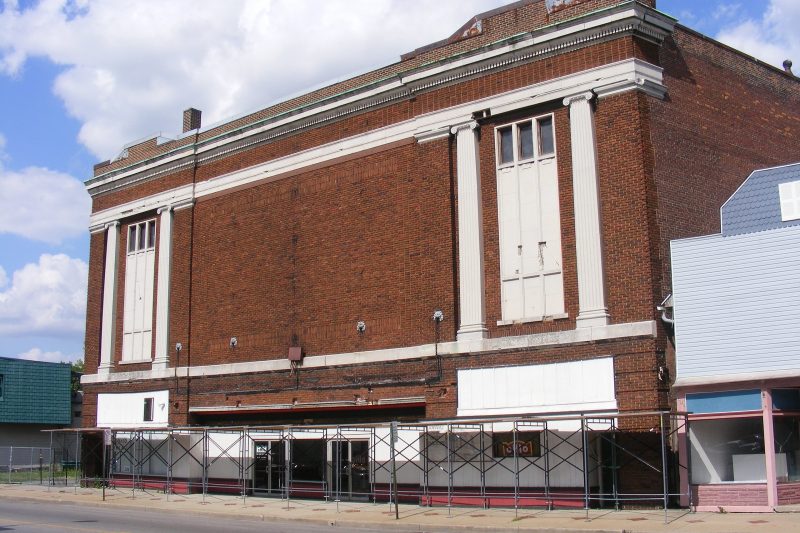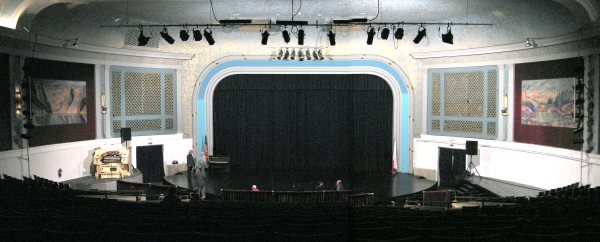Toledo, Ohio Theatre
Historic Theaters
CASE Studies


Current Name of Theater: The Ohio Theatre
Current Type: Performing Arts Theater
Seats: 964
Website: www.toledo-theater.com
Historic Names of Theater: The Ohio Theatre
Contact: 888-791-3339
Year Built/Style: 1921 / Classical Revival
Original Architect: Stophlet and Stophlet, Anthony Kocherowski, et al.
Original Cost:
Listed on National Register: Listed on the National Register of Historic Places in 2006 – 06000198
History of Theater:
The Ohio Theatre was built by the Lagrange Street Amusement Company, opening its doors on February 28, 1921, featuring the Douglas Fairbanks film, The Mark of Zorro. Admission, including the War Tax, was 25 cents for adults and 15 cents for children. It was the largest neighborhood theatre in the country at the time. In 1929 Toledo had 41 indoor movie houses. While the country was experiencing the Great Depression, movie houses such as the Ohio Theatre offered quite an entertainment value. The Ohio Theatre still features the original deluxe red brick façade with Greek columns, a loading dock with overhead doors, the original wood seats with the original aisle lighting, the original side wall sconces and the original projection booth with a newsreel work bench. It has the same footprint as when it was built in 1921.
The Lagrange Street Amusement Company was dissolved by court order in 1923 and sold at public auction to Rosa Bialorucki, the only bidder and one of the five investors in the Lagrange Street Amusement Company. The Bialorucki family owned the theatre until 1974 when it was acquired by the Catholic Diocese of Toledo.
The Ohio Theatre is located in Toledo’s Polish International Village on Lagrange Street, the center of Toledo’s largest concentration of people of Polish ancestry for over 130 years. For generations, the Ohio Theatre has been a source of entertainment for Toledo area residents — from vaudeville and silent films, to movies and weekly serials, and even performing arts.
This three-story brick and stone masonry building comprises 8,000 square feet (740 m2) and features stadium seating, the original Mighty 90 carbon arc 35mm movie projectors, and the Marr and Colton pipe organ originally installed in the razed Rivoli Theatre in downtown Toledo.[2] The theatre has a spacious 40’ by 60’ thrust stage with a 10’ by 20’ orchestra platform.
Cost of Rehabilitation:
Architects:
Firms:
Source of Funds:
Renovation Story:
It was sold to the Ohio Theatre, Inc., a non-profit management board in 2004, and sold again in 2009 to United North, formerly known as the Lagrange Development Corporation, a non-profit community development corporation.
Currently The Ohio Theatre seats 964 and hosts high quality performances of all disciplines, as well as rental activities. Featured artists have received local, regional, national, and international acclaim. Past Ohio Theatre presentations include The Moscow Boys Choir, folk artist Seonna McDowell, The Warsaw Wind Quintet with Pianist Michiko Otaki, and most recently Neil Simon’s THE ODD COUPLE, starring Jamie Farr and William Christopher. The Ohio also produces an annual community based musical, and sponsors a community chorus which performs concerts throughout the area.
Thousands of area school children experience the performing arts as an extension of classroom learning through the Ohio Theatre Arts in Education series. And Hundreds of area children gain practical theatrical experience through the Prairie Fire Children’s Theatre residencies sponsored by the Ohio.
The Historic Ohio Theatre is proud to be the home of The Toledo Area Theatre Organ Society. TATOS preserves and maintains the restored Marr & Colton Theatre Organ from the razed Rivoli Theatre. TATOS presents concerts featuring well known organists and works diligently to maintain an important link to Toledo’s past.
Over the years, tens of thousands of volunteer hours have been devoted to the operation and maintenance of The Historic Ohio Theatre. The Ohio Theatre is operated by a private non-profit corporation which strives to preserve and improve the historic theatre for many generations to come. Operating expenses are met though Annual Membership contributions, event and rental activities, special fund-raising, and through generation contributions from the public.
![]()

